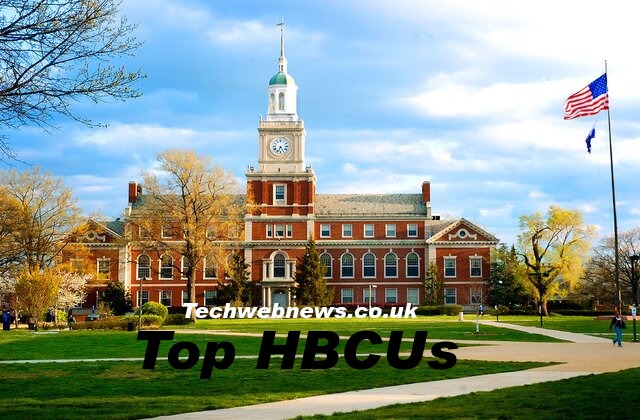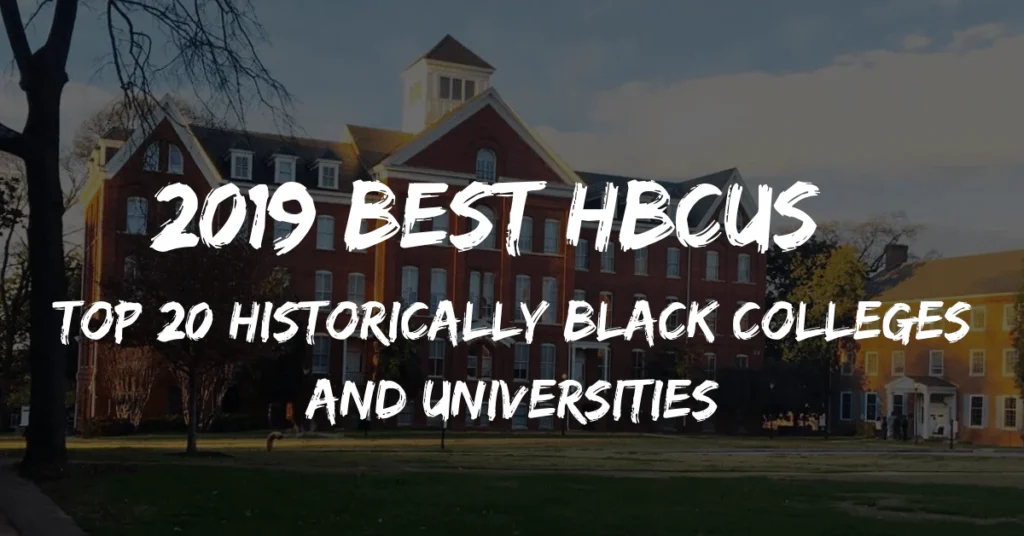Top HBCUs: A Deep Dive into Excellence, Legacy, and Opportunity

Introduction: Why HBCUs Deserve the Spotlight
Top Top HBCUs When people think about higher education in the United States, they often imagine Ivy League schools or big public universities with massive campuses and sprawling alumni networks. But there’s another group of institutions that have been quietly shaping leaders, innovators, and change-makers for well over a century—Historically Black Colleges and Universities, better known as Top HBCUs. The phrase “Top HBCUs” isn’t just about academic rankings or popularity contests; it’s about the schools that consistently represent excellence, community, and cultural pride.
Top HBCUs were born out of necessity, during a time when African Americans were denied access to mainstream universities. But what began as a response to exclusion has evolved into a thriving network of colleges that now stand on their own merits. Today, these institutions produce a disproportionate number of Black doctors, lawyers, engineers, and entrepreneurs. That fact alone speaks volumes about the impact of HBCUs in shaping not just the Black community but also the American workforce at large.
So, when we talk about the “Top HBCUs,” we aren’t simply compiling a list of schools with high GPAs or popular sports teams. We’re also honoring the historical roots, cultural significance, and unique opportunities these schools bring to the table. Let’s take a closer look at why they matter and what makes them stand out.
The Legacy of Top HBCUs: More Than Just Schools

The story of Top HBCUs is deeply tied to the story of America itself. In the mid-19th century, when slavery had just ended and segregation still dominated the South, African Americans were left with little access to higher education. Out of this struggle came the creation of Top HBCUs—schools designed to open doors that were otherwise slammed shut. They started small, sometimes with just a few classrooms or even church basements, but their purpose was monumental: to educate a people who were systematically denied the chance to learn.
What’s remarkable about this legacy is how these schools didn’t just focus on academics—they also became cultural centers. They offered safe havens where Black students could explore who they were, free from the limitations imposed by a society steeped in racism. In many ways, Top HBCUs became places where confidence was nurtured as much as intellect. That’s a big reason why graduates of these schools often describe their college years not just as an education but as a formative life experience.
Even today, Top HBCUs carry that legacy forward. They don’t just prepare students for careers; they prepare them for leadership roles. Whether it’s in business, politics, education, or the arts, HBCUs continue to serve as launchpads for greatness. Understanding this history is key to appreciating why the “top” HBCUs are more than just institutions—they are symbols of resilience, progress, and cultural pride.
What Defines the Top HBCUs?
When we think about what makes an Top HBCUs “top-tier,” it’s easy to assume it’s all about rankings and statistics. While those do matter, they’re only part of the story. For Top HBCUs, excellence can be measured in multiple ways, from the strength of their academic programs to the vibrancy of their campus culture. Let’s break down a few defining qualities.
First, there’s academic reputation. The top HBCUs consistently offer strong programs in fields like STEM, business, and the humanities. Schools like Howard University and Spelman College, for instance, are known nationwide for producing graduates who go on to prestigious graduate schools or influential careers. These programs are competitive not only among HBCUs but across the broader landscape of American higher education.
Second, there’s cultural influence. The best Top HBCUs create environments where students feel seen and celebrated. Homecoming events, step shows, and rich traditions become as much a part of the college experience as classroom learning. That cultural energy fosters a sense of belonging and community that many students say is unmatched elsewhere.
Finally, there’s impact. A Top HBCUs isn’t just about prestige—it’s about the lives it touches. These schools have produced icons ranging from Thurgood Marshall and Oprah Winfrey to current leaders in politics and entertainment. Their influence stretches far beyond campus grounds, shaping not just graduates but society as a whole.
Howard University: The “Mecca” of Top HBCUs
If you’ve ever heard someone refer to Howard University as Top HBCUs that’s no exaggeration. Located in Washington, D.C., Howard is arguably the most famous HBCU in the world. Founded in 1867, the school has earned its reputation as a powerhouse of Black excellence.
Academically, Howard has top-ranked programs in law, medicine, and business. Its graduates frequently go on to leadership positions, not just in the U.S. but globally. From U.S. Vice President Kamala Harris to award-winning actor Chadwick Boseman, Howard’s alumni network reads like a who’s who of influential figures. That’s the kind of legacy that cements Howard’s position among the top HBCUs.
But Howard is more than just academics and famous alumni. The school’s campus culture is electric. Whether it’s Bison sports, homecoming events that attract thousands, or its vibrant student organizations, Howard creates an environment where students are both challenged and celebrated. It’s no wonder so many people look to Howard as the gold standard for Top HBCUs.
Spelman College: A Leader in Women’s Education
When it comes to women’s education, Spelman College in Atlanta stands out as one of the top HBCUs—and one of the top liberal arts colleges in the country, period. Founded in 1881, Spelman has long been dedicated to empowering Black women through education.
Top HBCUs One of Spelman’s biggest strengths is its focus on cultivating leaders. The college consistently ranks high in producing Black women who pursue advanced degrees, particularly in STEM fields where representation has traditionally been lacking. This emphasis on excellence has made Spelman a beacon for young women who want to combine academic achievement with cultural pride.
Beyond academics, Spelman’s culture is unique. Its all-women environment fosters a sense of sisterhood that students carry with them long after graduation. The campus traditions, mentorship programs, and commitment to service create a holistic college experience that’s hard to replicate anywhere else. That’s why Spelman doesn’t just belong on a list of top HBCUs—it deserves a spot on any list of top colleges in America.
Morehouse College: Building Men of Distinction
Right next door to Spelman is its brother institution, Morehouse College. Known for shaping men of character, Morehouse has produced some of the most influential leaders in history. Martin Luther King Jr., Spike Lee, and Samuel L. Jackson are just a few of its iconic alumni.
Top HBCUs Morehouse has a reputation for instilling not only knowledge but also a sense of responsibility. Its motto, “Et Facta Est Lux” (“And there was light”), captures the essence of its mission: to develop men who will lead with integrity and vision. Whether students go into politics, arts, or business, Morehouse ensures they leave with a sense of purpose that extends beyond personal success.
The Morehouse experience also emphasizes community. Students often describe the campus as a brotherhood, where lifelong friendships and mentorships are formed. That tight-knit environment, combined with academic rigor, makes Morehouse one of the most respected Top HBCUs in the country.
Why Top HBCUs Still Matter Today
Some people ask, “Do we still need Top HBCUs in 2025?” The answer is a resounding yes. Even though opportunities for Black students at predominantly white institutions (PWIs) have expanded, HBCUs continue to offer something unique: a space where culture and education intersect seamlessly.
One major reason they still matter is representation. At Top HBCUs, students see professors, administrators, and leaders who look like them and understand their experiences. That kind of representation can be empowering in ways that can’t be overstated. It shows students that success isn’t just possible—it’s expected.
Another reason is community. The supportive environments at Top HBCUs often mean higher graduation rates for students who might otherwise struggle at larger, less personalized institutions. Plus, the cultural traditions and strong alumni networks create lifelong connections that extend well into professional life. For many, choosing an HBCU is less about where they’ll go to college and more about joining a movement.
Conclusion: The Power of Top HBCUs
The phrase “Top HBCUs” isn’t just a ranking—it’s a recognition of institutions that have stood the test of time, nurtured generations of leaders, and continue to thrive in the modern era. Schools like Howard, Spelman, and Morehouse don’t just prepare students for jobs; they prepare them for greatness.
But beyond individual names, the entire network of HBCUs deserves respect. Together, they represent resilience, excellence, and opportunity in a way no other group of schools does. For students seeking not only education but also identity, culture, and community, the top HBCUs remain some of the best choices in higher education.
In the end, HBCUs are more than colleges—they’re a living legacy. And the top HBCUs? They’re proof that history, culture, and excellence can come together to create something truly extraordinary.



